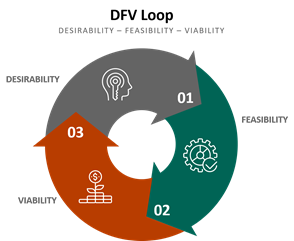Three Final Steps to Social Entrepreneurship | Social Enterprise Series #5
Three Final Steps to Social Entrepreneurship | Social Enterprise Series #5

We’re now at the final three steps on your journey to effective innovation and entrepreneurship in the nonprofit context. If you’re following steps one through eight diligently, steps nine, ten, and 11 will be that much more fruitful. You can find all of the posts in this series here.
9. Screen ideas to shorten the list.
In this step, we shorten the list of ideas (step eight) into something more manageable. At this point we’ll use the criteria you established in step six to score each idea against each criterion. Here is a link for more detailed suggestions about how to go about this, as well as a blank scorecard.
Early on, this scoring process takes a while. In fact, it can take an hour or two to score a couple of ideas. If you’ve got 50 or so ideas, an hour per idea is not feasible. Resist the temptation to shortcut the scoring process! You will find that the scoring goes much faster after the first few because the team becomes more in sync. You’ll begin to weave in each other’s thinking and the team naturally becomes aligned. This only happens if you muddle through the early few without rushing.
Take the higher scoring ideas, say three, to the next step. NOTE: You may find that in some cases a lower-scoring idea is taken to the next step above the others because of group enthusiasm for an idea. So while each criterion, scored individually, may not add up to a number that is near the top, it’s fine to have select ideas leapfrog the others because of the group’s enthusiasm for it. The enthusiasm and passion for an initiative is every bit as important to success as the market considerations. Many an entrepreneur has been successful principally because of his or her grit in seeing it through.
10. Explore the Desirability-Feasibility-Viability (DVF) Loop.
If you’ve heard of or are familiar with human-centered design and design thinking then you’ll recognize elements of the DVF Loop. Human-centered design is a creative approach to problem-solving and it starts with a deep empathy for the people you are seeking to help. Many failures stem from skipping this step. Any flourishing initiative--in any sector--regularly takes the DFV Loop into consideration, prior to and long after launch.
I’ve found the most productive way to work the loop is through a productive questioning strategy. In his book A More Beautiful Question, Warren Berger argues that questioning is a starting point of innovation. “To me, any question that causes people to shift their thinking is a beautiful one,” Berger writes. Questions “...remind you to slow down and think more, to broaden your perspective, to see past biases, creative blocks, and emotional reactions.” Within an adventure team (step three), I’ve found that Socratic questioning techniques are helpful and intuitive, and are central to critical thinking.
For each idea the team is considering, use the following nine questions to get more specific about it.
- Who wants what value?
- How do they want it?
- What does it take to solve the problem or deliver the solution on the customer’s terms?
- How can we do it? (assets, know-how, and capacity)
- How can we earn the privilege? (sales and marketing)
- How do we keep them as a customer? (customer service)
- How can we resource it now? (through fees or other means)
- How can we resource it in the future? (enduring nature of payer sources)
- Will revenues predictably exceed all costs over the long haul, to an extent that makes it worthwhile?
These questions seem straightforward enough; however, they can spark numbers of other questions based on the answers and the nature of the idea being scrutinized. Here is a link to more questions in each category.

The first two questions—the desirability questions—get to the nature of a problem to be solved or desire to be fulfilled for a population. Value is the critical word. If the prospective customer does not perceive value she will not become a paying customer. And, if that paying customer does not receive the value she expected, that customer will not buy again. The goal is to get deep inside the customer’s perspective and the nature of her needs and desires.
The feasibility questions—numbers three through six—get at the core of what it will take to satisfy the demand such that would-be customers select your solution over others. These are technical can-it-be-done questions. Earning the privilege means delivering the value the prospective customer seeks in a way that is at least a little bit better than the alternatives choices. That is, some things are absolutely critical—'must haves’—while other aspects are secondary ‘nice to haves,’ but not critical. Earning the privilege also necessitates being wherever the prospective customer is as she is considering her options. This is marketing’s task. The case must be persuasive enough for the prospective customer to cross over into customerland. This is sale’s task. Once the customer is in the fold the task is to perform excellently so that the now customer chooses your solution again.
The viability questions—numbers seven through nine—determine whether the whole effort is worth it based on the objectives you established in step five. I want to dwell for a moment on the phrase all costs in question nine. It’s tempting to make general allocations for things like ‘overhead’ however this leads to inaccurate costing. General allocations are easy, uniform, and almost always wrong. Better to do the work of careful activities-based cost accounting in advance of making what could be a big commitment. So much can fall apart here by creating financial models that conform to what we’d like to see, as opposed to what’s really there. It’s one of the decision-making biases mentioned in the third post in this series. Prove the costs assumptions, and calibrate them, with trials and smaller rollouts prior to a bigger play.
If the revenue from fees doesn’t meet or exceed the costs, you still have—if the desirability and feasibility areas are solid—a great case to make to donors and grantors for their support provided the social impacts align with their priorities. You’ve demonstrated that you’re a good steward of available resources while, at the same time, you are seeking to generate more resources.
As you go deeper with the investigation of an initiative, prioritize small experiments to test assumptions within the DFV Loop. We’ve learned enough about lean experiments to apply them in our own corners of the world. This approach has proven far more reliable in determining the desirability, feasibility, and viability of a prospective venture (or program) than the more traditional research approaches we’ve become accustomed to.
I recommend that members of the adventure team use their judgment to take a first pass at the DFV Loop questions above. Then, reconvene and compare responses. I shorthand this process as ‘first-level scrutiny.’ This exercise pushes the team to get in alignment around central aspects of the proposed initiative. At this point the team can re-evaluate it against the criteria established in step six. If the idea is still of interest, the team can use their assimilated responses to the questions to determine the best path forward in illuminating its desirability, feasibility, and viability. Any gaps identified contribute to a research action plan. Executing this action plan is what I call ‘second-level scrutiny.’
Again, I recommend running small experiments in any areas that are ‘testable.’ This combined with other research methods will give you a rich sense of the merits. The team can use its judgment as to how much analysis is enough. If the team is balanced as prescribed in steps three and seven, you’ll avoid the analysis paralysis that can plague any of us AND feel comfortable that all aspects are as accounted for as they reasonably could be.
11. Launch and/or cycle to the next idea.
If you backburner or eliminate an idea, as long as step eight is in motion (hint: it should be!), there should always be a set of ideas to take into the DFV Loop. Most ideas won’t pass this gantlet. That’s the nature of it. The more ideas you have, the more likely you will find ones that are optimal fits.
I’ve used the word judgment several times throughout these posts. This is what it boils down to: good judgment. As a leader you’re constantly honing your ability to discern the next best step. Following the steps I’ve outlined in these posts, you’ll dramatically increase your odds of success with new initiatives (be they revenue generators or excellent programs) and develop your ability to discern effectively as well.
We made it! Here’s to 2021. My dream for you and your team is that you not only dream the impossible again, but feel better chasing down those dreams. Thank you once again for all that you do to make our world a better place.
- Read Dave Parker’s entire series about social entrepreneurship here.